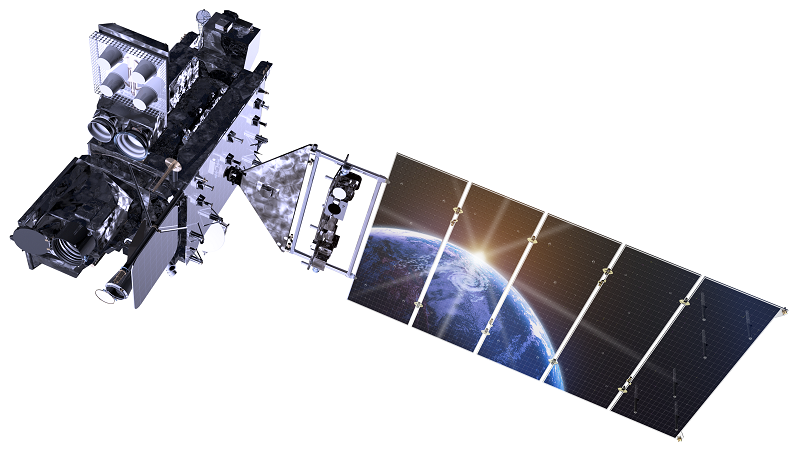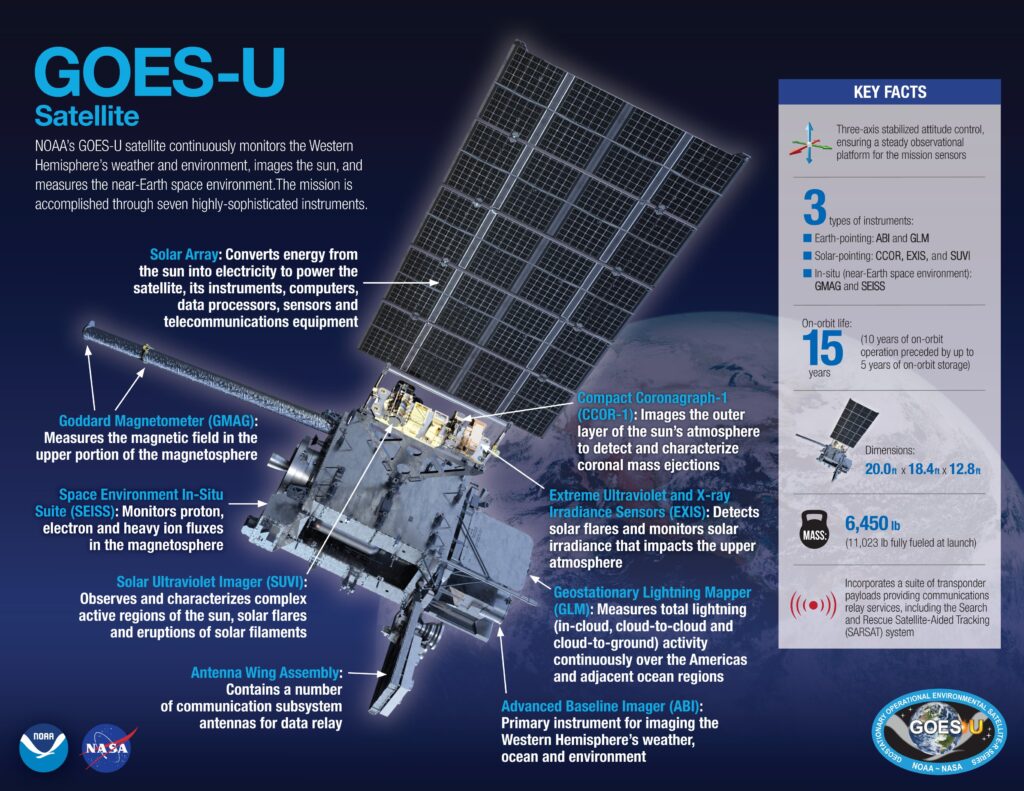
NOAA is getting ready to launch their last weather satellite of the GOES-R series, the GOES-U. On June 25, atop a SpaceX Falcon Heavy Rocket, the fourth satellite in the GOES-R series will launch into space and head to its point of geostationary orbit, roughly 22,236 miles above the Earth’s surface. After it’s thoroughly checked-out there and activated, it will begin sending imagery and data down to meteorologists on Earth for additional analysis.
The GOES-R Series provides advanced imagery and atmospheric measurements, real-time mapping of lightning activity, and monitoring of space weather. GOES-U will be renamed GOES-19 after it reaches geostationary orbit. Following a successful on-orbit checkout of its instruments and systems, NOAA plans to put GOES-19 into operational service, replacing GOES-16 as GOES East. GOES-19 will work in tandem with GOES-18, NOAA’s GOES West satellite. Together, GOES East and GOES West watch over more than half the globe – from the west coast of Africa to New Zealand.
The Advanced Baseline Imager (ABI) is the primary instrument on the GOES-R Series satellites for imaging Earth’s weather, ocean and environment. Forecasters use ABI data for a wide range of applications related to severe weather, hurricanes, aviation, natural hazards, the atmosphere, ocean and cryosphere.

The Geostationary Lightning Mapper (GLM) is the first operational lightning mapper flown in geostationary orbit. Developing severe storms often exhibit a significant increase in lightning activity and GLM data can help forecasters focus on initial thunderstorm development and intensifying severe storms before they produce damaging winds, hail or even tornadoes.
GOES-U hosts a suite of instruments that improve the detection of approaching space weather hazards. The Solar Ultraviolet Imager (SUVI) and Extreme Ultraviolet and X-ray Irradiance Sensors (EXIS) provide imaging of the sun and detection of solar flares. The Compact Coronagraph-1 (CCOR-1) images the solar corona (outer layer of the sun’s atmosphere) to detect and characterize coronal mass ejections (CMEs). CCOR-1 is a new instrument for GOES-U and is part of NOAA’s Space Weather Follow On mission.
The Space Environment In-Situ Suite (SEISS) and Magnetometer monitor, respectively, energetic particles and the magnetic field variations that are associated with space weather. Together, observations from these instruments contribute to space weather forecasts and early warning of disruptions to power utilities and communication and navigation systems as well as radiation damage to orbiting satellites.
SpaceX will launch the satellite into space from the 39A Launch Complex at Kennedy Space Center in Florida. Launch is expected at 5:16 pm on June 25.